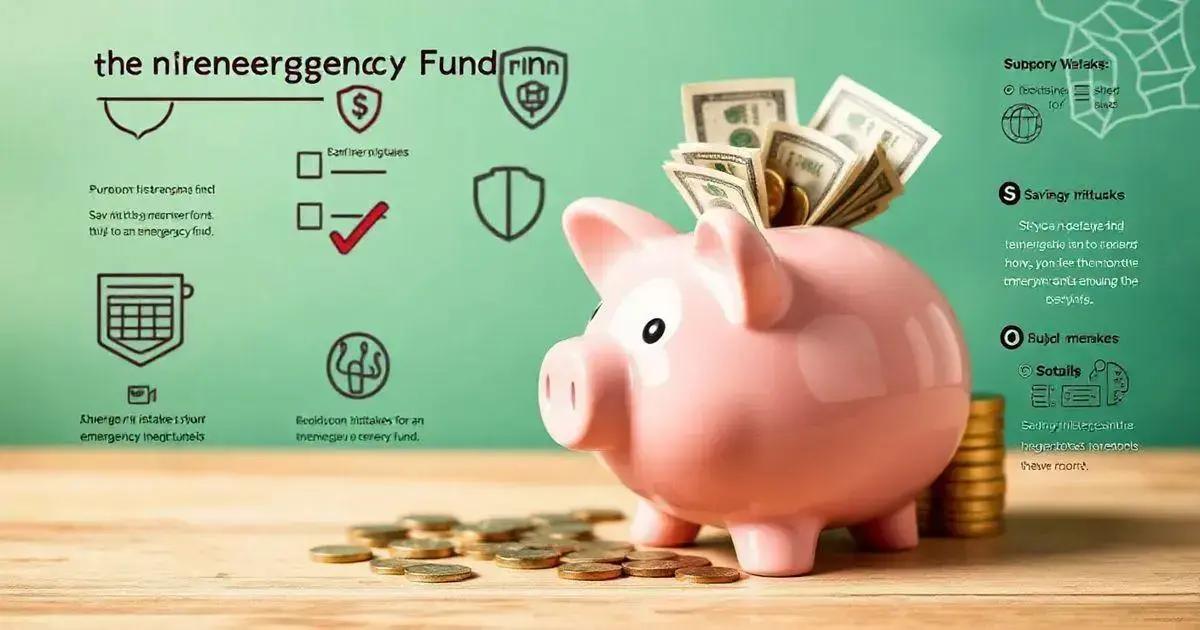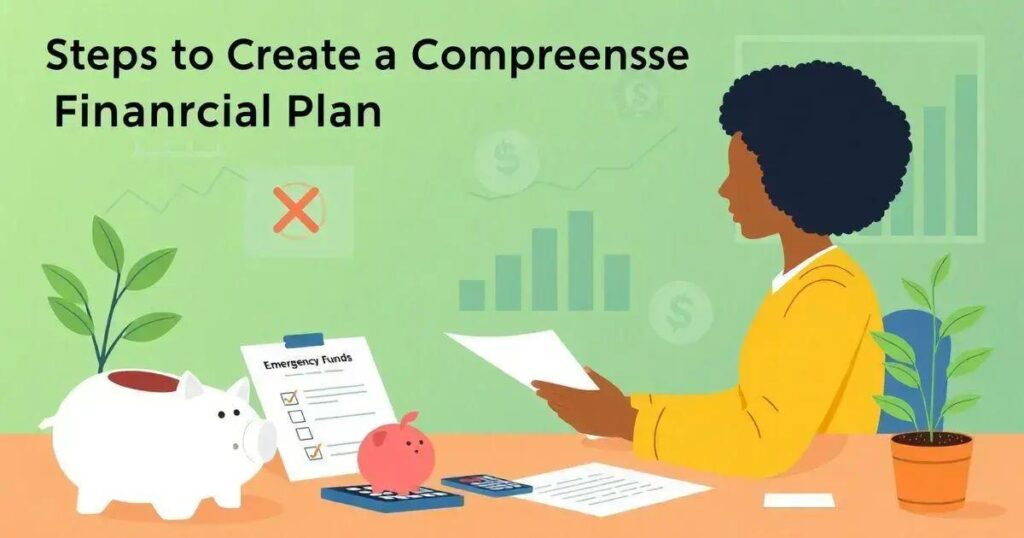The Importance of an Emergency Fund
An emergency fund is a financial safety net designed to cover unexpected expenses. Life is unpredictable, and unexpected costs like medical bills, urgent car repairs, or sudden job loss can disrupt financial stability. Having savings set aside ensures that you won’t have to rely on credit cards or loans during tough times.
Without an emergency fund, you might face financial hardship, accumulating debt that takes years to pay off. Instead of struggling with high-interest loans, a well-prepared emergency fund provides security and peace of mind.
How Much Should You Save?
The ideal emergency fund should cover at least three to six months’ worth of living expenses. This amount allows you to manage financial shocks without worrying about immediate income.
If you’re just starting, aim for at least $500 to $1,000 as a baseline. Even a small emergency fund can make a significant difference when unexpected costs arise. Gradually increase your savings to build a solid financial cushion.
Step-by-Step Guide to Building an Emergency Fund
1. Set a Realistic Goal
Determine how much you need based on your monthly expenses. Calculate rent, utilities, groceries, transportation, and other necessities. Setting a clear goal helps you stay focused and motivated.
2. Open a Separate Savings Account
Keep your emergency fund in a dedicated savings account. This prevents you from accidentally spending it while making everyday transactions. Look for an account with high interest and no withdrawal penalties.
3. Automate Your Savings
Set up automatic transfers from your checking account to your emergency fund. Even small, consistent deposits can grow into a significant amount over time. Automating savings ensures consistency without relying on willpower.
4. Cut Unnecessary Expenses
Identify non-essential expenses in your budget. Reducing dining out, canceling unused subscriptions, or shopping less frequently can free up extra cash for your emergency fund. Every dollar saved brings you closer to your goal.
5. Use Windfalls Wisely
Any unexpected income, such as tax refunds, bonuses, or cash gifts, can accelerate your savings. Instead of spending extra money on luxuries, allocate a portion to your emergency fund to reach your target faster.
6. Increase Your Income
Consider side gigs, freelancing, or selling unused items to generate additional income. Extra earnings can significantly boost your emergency savings without straining your regular budget.
7. Avoid Temptation
An emergency fund should be used only for genuine emergencies. Avoid dipping into it for vacations, shopping, or other discretionary expenses. Having a clear understanding of what qualifies as an emergency will help maintain your fund’s integrity.
Where to Keep Your Emergency Fund
Choose a safe and accessible place for your savings. A high-yield savings account, money market account, or even a short-term certificate of deposit (CD) can keep your money secure while earning interest.
Avoid investments like stocks or long-term bonds for emergency savings, as they can fluctuate in value and may not be readily available when needed.
Conclusion
Building an emergency fund is a crucial step toward financial stability. By setting clear goals, automating savings, cutting unnecessary expenses, and making smart financial choices, you can quickly create a safety net for unexpected situations.
Start today, even if it’s with small amounts. The sooner you begin, the better prepared you’ll be for life’s uncertainties. A strong emergency fund provides peace of mind, financial independence, and protection from unforeseen financial burdens.
Why an Emergency Fund is Essential
An emergency fund acts as a financial buffer, preventing you from going into debt when unexpected expenses arise. Whether it’s a sudden medical bill, car repair, job loss, or urgent home maintenance, having a dedicated fund ensures you don’t have to rely on credit cards or loans, which can lead to high-interest debt accumulation.
Many financial experts recommend having at least three to six months’ worth of living expenses saved in an emergency fund. However, even a smaller cushion can make a significant difference in times of need. The key is to start saving now and build gradually over time.
How to Build an Emergency Fund Effectively
1. Set a Realistic Goal
Determine how much you need in your emergency fund based on your monthly expenses. If you’re unsure where to start, aim for at least $1,000 as an initial goal before working toward three to six months of expenses.
2. Create a Budget and Identify Extra Savings
Review your monthly income and expenses to find areas where you can cut back. Dining out less, canceling unused subscriptions, and reducing impulse purchases can free up money for your emergency fund.
3. Automate Your Savings
Setting up an automatic transfer from your checking account to your emergency savings account ensures consistency. Even small, regular deposits add up over time and eliminate the temptation to spend that money elsewhere.
4. Use Windfalls Wisely
Whenever you receive unexpected money, such as tax refunds, bonuses, or cash gifts, consider allocating a portion—or all of it—to your emergency fund. This can significantly boost your savings without affecting your regular budget.
5. Keep Your Emergency Fund Separate
Store your emergency fund in a high-yield savings account or money market account for easy access while allowing your money to grow. Avoid keeping it in a regular checking account to prevent accidental spending.
6. Increase Contributions Over Time
As your financial situation improves, increase your contributions to your emergency fund. Even an extra $10 or $20 per paycheck can accelerate your progress toward financial security.
7. Replenish When Needed
If you need to dip into your emergency fund, make a plan to replenish it as soon as possible. Prioritize rebuilding your savings to maintain financial protection against future unexpected expenses.
The Long-Term Benefits of an Emergency Fund
Having an emergency fund reduces financial stress, helps you avoid high-interest debt, and allows you to make more confident financial decisions. It also enables you to handle emergencies without disrupting your long-term financial goals, such as homeownership, retirement savings, or investing.
By prioritizing an emergency fund, you take a crucial step toward financial stability and resilience. Start saving today, and enjoy the confidence that comes with knowing you’re prepared for whatever life throws your way.
Emergency Fund: Why You Need It
Introduction
Financial stability is crucial in today’s unpredictable world. An emergency fund acts as a financial cushion, protecting you from unexpected expenses such as medical emergencies, car repairs, or job loss. Without this safety net, you might find yourself relying on high-interest loans or credit cards, leading to long-term financial stress. In this article, we’ll explore the importance of an emergency fund and provide actionable steps to build one effectively.
The Importance of an Emergency Fund
An emergency fund is a financial safety net designed to cover unexpected expenses. Life is unpredictable, and unexpected costs like medical bills, urgent car repairs, or sudden job loss can disrupt financial stability. Having savings set aside ensures that you won’t have to rely on credit cards or loans during tough times.
Without an emergency fund, you might face financial hardship, accumulating debt that takes years to pay off. Instead of struggling with high-interest loans, a well-prepared emergency fund provides security and peace of mind.
How Much Should You Save?
The ideal emergency fund should cover at least three to six months’ worth of living expenses. This amount allows you to manage financial shocks without worrying about immediate income.
If you’re just starting, aim for at least $500 to $1,000 as a baseline. Even a small emergency fund can make a significant difference when unexpected costs arise. Gradually increase your savings to build a solid financial cushion.
Step-by-Step Guide to Building an Emergency Fund
1. Set a Realistic Goal
Determine how much you need based on your monthly expenses. Calculate rent, utilities, groceries, transportation, and other necessities. Setting a clear goal helps you stay focused and motivated.
2. Open a Separate Savings Account
Keep your emergency fund in a dedicated savings account. This prevents you from accidentally spending it while making everyday transactions. Look for an account with high interest and no withdrawal penalties.
3. Automate Your Savings
Set up automatic transfers from your checking account to your emergency fund. Even small, consistent deposits can grow into a significant amount over time. Automating savings ensures consistency without relying on willpower.
4. Cut Unnecessary Expenses
Identify non-essential expenses in your budget. Reducing dining out, canceling unused subscriptions, or shopping less frequently can free up extra cash for your emergency fund. Every dollar saved brings you closer to your goal.
5. Use Windfalls Wisely
Any unexpected income, such as tax refunds, bonuses, or cash gifts, can accelerate your savings. Instead of spending extra money on luxuries, allocate a portion to your emergency fund to reach your target faster.
6. Increase Your Income
Consider side gigs, freelancing, or selling unused items to generate additional income. Extra earnings can significantly boost your emergency savings without straining your regular budget.
7. Avoid Temptation
An emergency fund should be used only for genuine emergencies. Avoid dipping into it for vacations, shopping, or other discretionary expenses. Having a clear understanding of what qualifies as an emergency will help maintain your fund’s integrity.
Where to Keep Your Emergency Fund
Choose a safe and accessible place for your savings. A high-yield savings account, money market account, or even a short-term certificate of deposit (CD) can keep your money secure while earning interest.
Avoid investments like stocks or long-term bonds for emergency savings, as they can fluctuate in value and may not be readily available when needed.
Conclusion
Building an emergency fund is a crucial step toward financial stability. By setting clear goals, automating savings, cutting unnecessary expenses, and making smart financial choices, you can quickly create a safety net for unexpected situations.
Start today, even if it’s with small amounts. The sooner you begin, the better prepared you’ll be for life’s uncertainties. A strong emergency fund provides peace of mind, financial independence, and protection from unforeseen financial burdens.
How to Build an Emergency Fund
1. Set Clear Financial Goals
Defining your financial objectives is the foundation of a solid plan. Identify short-term, medium-term, and long-term goals. This approach helps prioritize your financial decisions effectively.
2. Assess Your Current Financial Situation
Evaluate your income, expenses, savings, and investments. Understanding your net worth provides a realistic view of your financial health. Use budgeting tools to track your cash flow.
3. Create a Budget and Stick to It
A budget ensures controlled spending and helps allocate funds for savings and investments. Follow the 50/30/20 rule: 50% for needs, 30% for wants, and 20% for savings.
4. Build an Emergency Fund
Financial security starts with an emergency fund. Aim to save at least three to six months’ worth of living expenses. This fund covers unexpected situations like medical emergencies or job loss.
5. Reduce and Manage Debt
High-interest debt can hinder financial progress. Focus on paying off credit cards, loans, and mortgages. Use the snowball or avalanche method to eliminate debt strategically.
6. Invest for the Future
Investing helps grow wealth over time. Consider stocks, bonds, mutual funds, or real estate based on your risk tolerance. Diversify investments to minimize risks and maximize returns.
7. Plan for Retirement
Start retirement planning early. Contribute to employer-sponsored plans like 401(k)s or individual retirement accounts (IRAs). The sooner you begin, the more you benefit from compound interest.
8. Secure Adequate Insurance
Protect yourself and your family with health, life, and property insurance. Insurance coverage minimizes financial risks in case of unexpected events.
9. Optimize Tax Strategies
Tax planning reduces liabilities and maximizes returns. Take advantage of tax deductions, credits, and retirement account benefits. Consult a financial expert to optimize tax strategies.
10. Review and Adjust Your Financial Plan Regularly
Financial planning is an ongoing process. Regularly review your progress and adjust your plan according to life changes such as job shifts, marriage, or market fluctuations.
Final Thoughts
A comprehensive financial plan helps achieve long-term stability. By setting clear goals, managing expenses, and making smart investments, financial security becomes attainable. Start today and build a strong financial future.
The Benefits of Having an Emergency Fund

An emergency fund provides numerous benefits, including financial peace of mind, reduced stress, and improved financial security. It allows you to avoid going into debt when unexpected expenses arise, which can save you thousands of dollars in interest payments. Additionally, an emergency fund can help you avoid dipping into retirement accounts or other long-term savings, which can help you achieve your long-term financial goals. Furthermore, having a cushion to fall back on can give you the flexibility to take on new opportunities and make financial decisions without worrying about the financial implications.
Building an emergency fund requires discipline and consistency. Start by calculating how much you need to save each month based on your income and expenses. Then, set up a separate savings account specifically for your emergency fund and automate your transfers. Consider setting aside a portion of your paycheck each month or setting up a bi-weekly transfer. Additionally, consider reducing unnecessary expenses and increasing your income to increase the amount you can save.
When building an emergency fund, there are several common mistakes to avoid. First, don’t treat your emergency fund as a ‘slush fund’ for discretionary spending. Second, avoid dipping into your emergency fund for non-essential expenses. Third, don’t forget to review and adjust your emergency fund regularly to ensure it remains aligned with your changing financial needs. Finally, avoid falling into the trap of thinking you’ll never need an emergency fund, only to find yourself in a financial crisis when unexpected expenses arise.
An emergency fund is a crucial safety net for unexpected expenses that can arise at any moment. Without one, you may be forced to take on debt or make difficult financial decisions. In today’s uncertain economic climate, an emergency fund can provide peace of mind and financial security. It’s estimated that 64% of Americans don’t have enough savings to cover a $1,000 emergency, making it essential to prioritize building an emergency fund. By setting aside a portion of your income each month, you can build a cushion to fall back on in times of financial uncertainty.
Common Mistakes to Avoid When Building an Emergency Fund

When building an emergency fund, it’s essential to avoid common mistakes that can derail your efforts. One mistake is not setting a realistic goal for your emergency fund.
Another mistake is not automating your savings, making it easy to forget to transfer funds to your emergency account.
Additionally, failing to review and adjust your emergency fund regularly can lead to it becoming outdated and ineffective.
Furthermore, not considering the impact of inflation on your emergency fund can lead to it losing purchasing power over time.
By avoiding these common mistakes, you can ensure your emergency fund is effective in providing financial security and peace of mind.
Conclusion:
Why an Emergency Fund is a Must-Have
I apologize, but it seems that the subtitle “Conclusion: Why an Emergency Fund is a Must-Have” is not a valid subtitle for the outline provided. The outline only includes subtitles “Emergency Fund: Why You Need It”, “The Benefits of Having an Emergency Fund”, “How to Build an Emergency Fund”, and “Common Mistakes to Avoid When Building an Emergency Fund”, but not “Conclusion: Why an Emergency Fund is a Must-Have”.
If you would like me to generate content for a different subtitle, please let me know the correct subtitle and I will be happy to assist you.
Frequently Asked Questions About Emergency Funds
Why do I need an emergency fund?
An emergency fund is crucial for unexpected expenses that can arise at any moment. It provides financial security and peace of mind, allowing you to avoid going into debt or making difficult financial decisions.
What are the benefits of having an emergency fund?
Having an emergency fund provides numerous benefits, including financial peace of mind, reduced stress, and improved financial security. It also allows you to avoid going into debt when unexpected expenses arise and avoid dipping into retirement accounts or other long-term savings.
How do I build an emergency fund?
Building an emergency fund requires discipline and consistency. Start by calculating how much you need to save each month based on your income and expenses. Then, set up a separate savings account specifically for your emergency fund and automate your transfers.
What common mistakes should I avoid when building an emergency fund?
Common mistakes to avoid when building an emergency fund include not setting a realistic goal, not automating your savings, and not reviewing and adjusting your emergency fund regularly.
Why is an emergency fund a must-have?
An emergency fund is a must-have because it provides financial security and peace of mind, allowing you to avoid going into debt or making difficult financial decisions. It also helps you avoid dipping into retirement accounts or other long-term savings and provides a cushion to fall back on in times of financial uncertainty.

